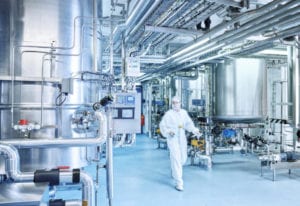
Digital transformation implementation in the industrial automation space is often more difficult than traditional change management efforts. Research confirms that nearly 75% of digital transformation efforts fall short, but why?
One reason is that after a conventional distributed automation system (DCS) is installed and commissioned, it offers limited opportunities to improve production, efficiency, and quality. Static, embedded control logic, proprietary software, and outdated hardware can:
- Restrict flexibility
- Constrain innovation
- Make implementing major system changes difficult and costly
- Prevent the realization of value-added benefits from the latest intelligent automation technologies (by needing to prioritize marginal system improvements instead)
Like all effective change management efforts, implementing effective digitalization is about adopting appropriate technologies where and when your organization can most benefit.
Digital transformation timelines
Industrial enterprises strive to align their digital transformation efforts with the speed of economic and technological change. In a previous post, we discussed how open DCS system architectures can help aid this and provide manufacturers flexibility for competitiveness. Yet, market shifts and customer demands continue to hinder the ability to implement the ideal combination of digital automation tools to increase efficiency, reduce cost, or use intelligent resource allocation at the operational level.
Developing a smarter, digital decision-making framework to improve process performance requires manufacturers to rethink how new digital process control technologies are implemented and reimagine the opportunities they can create. While automation technologies provide the potential for efficiency gains, without a data-driven mindset and organizational best practices, achieving operating goals can be difficult. How can you overcome this hurdle and leverage technological advancements now and in the future?
Aligning digital transformation with business value goals
To unlock the full potential of automation advancements, such as digital analytics and the industrial internet of things (IIoT), ask yourself:
- What are our timelines for achieving future objectives (e.g., sustainability, energy transition), and how can a technology roadmap help to achieve them?
- When should we introduce digitalization and connectivity technologies into our automation infrastructure, and when will they start producing positive impacts?
- How long will legacy technologies and systems continue to produce value for our organization, and what skills are needed to install and support new technology?
- How can we align digital transformation and business plans within the timelines we expect to achieve future outcomes?
Answering these questions is key for any ongoing industrial digital transformation strategy. Next, ensure your industrial automation systems can adapt and grow as your operational needs evolve.
Automation that delivers more capability and value
Until recently, future-proof automation systems were time-consuming and costly. However, new game-changing digital tools like EcoStruxure™ Automation Expert allow operations professionals to break their dependency on proprietary hardware suppliers.
This software-centric industrial automation system also enables unmatched speed and flexibility to adapt and upgrade infrastructures as business conditions change and new technologies emerge. EcoStruxure Automation Expert reimagines automation in several critical ways:
- By freeing industrial automation systems from closed, proprietary technology, manufacturers can deploy the best assets from different brands and systems, while IT and OT system integration enhances security and longevity so systems can evolve and adapt over time.
- In simplifying IT applications, tools, and technology integration, modern information system advancements can now more seamlessly integrate into control architectures.
- By natively supporting asset-centric design methodologies and easy-to-wrap and reuse portable automation objects, it maximizes engineering efficiency to get you up and running sooner.
- The decoupling of control algorithms from runtime hardware enables operations to more rapidly adapt to changing business requirements without incurring significant production downtime or capital costs.
Rethinking industrial process automation
What is the value in decoupling automation system hardware and software? Beyond enhancing operational agility and enabling you to extract greater value from your production infrastructure, it can help you:
- Focus on industrial asset profitability, not just the efficiency of manufacturing processes.
- Increase availability, reduce hardware dependence, and lessen equipment redundancy requirements.
- Break the IT/OT barrier and upgrade capabilities as conditions require and new technologies become available, rather than being bound to proprietary hardware timelines.
- Choose to implement incremental automation system improvements and/or disruptive innovations around cybersecurity, sustainability, and energy mix as your operational strategy prescribes.
- Reduce the negative impact of in-house expertise or supplier skills shortages in industrial automation upgrade efforts and get support on automation technology modernization across the production lifecycle.
Today’s technology advancements have transformed many aspects of the manufacturing industry. Operations personnel now have process control and automation systems that can be continuously adapted to keep pace. Manufacturers have access to tools and techniques to help modernize their operations; it’s simply a matter of embracing them. To learn more about how your process control and automation systems can be transformed with the newest technology and how your operations will benefit, visit the EcoStruxure Automation Expert page now.



